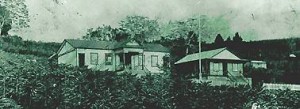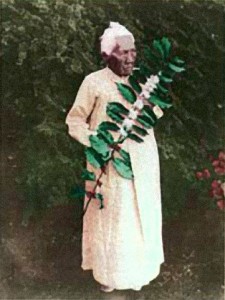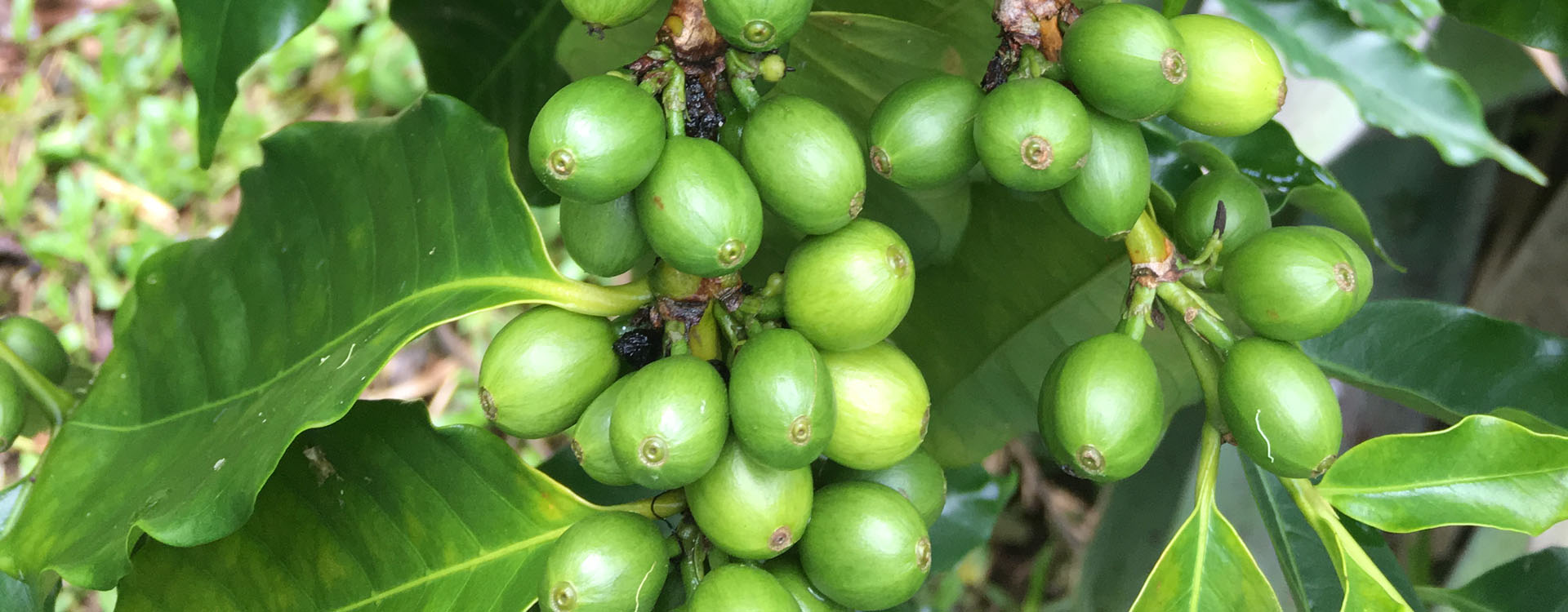The Kona Tradition- by C. B.Smith
 The Kona Tradition by C. B. Smith-
(written originally in 1999 and edited in 2023 ---much remains the same in 2023, except for the invasive pests, irresponsibly brought to Hawaii in the last few years. We believe the importation of green beans to Hawaii from other areas caused the problem.---Copyright of Cecelia Burns Smith)
Another day begins for the Kona coffee farmer. While cardinals start their song and morning breezes flow down from Mauna Loa (elevation 13,333 feet), the farmer grabs a cup of his best brew and walks out the door into history.
Kona coffee refers to coffee that is grown only in the North and South Districts of Kona on Hawaii island . These Kona Districts cover an area of about 20 miles long and 2 miles wide, on the west coast of the island. The North Kona area is on the slopes of Mt. Hualalai, while South Kona is on the slopes of Mauna Loa.
At last count, there were fewer than 600 farms growing coffee in the Kona Districts. While there are several farms over 65 acres each, the majority are much smaller and average about 5 acres. Only these farms produce Kona coffee. Coffee that is grown on other parts of the island or on other islands within the Hawaiian Chain may not call their product Kona coffee.
Kona Coffee, a Coffea arabica -var. typica, is generally acknowledged as one of the two most highly valued coffees in the world and it was first brought, in 1829, to Hawaii island by missionary and teacher Samuel Ruggles.
According to "Cup of Aloha" by well respected Kona Coffee authority, Gerald Kinro- published by University of Hawai'i Press in 2003-, Chapter 1, page 8... "Don Francisco de Paula Marin---- Chilean Counsel and provisioner of ships, Kamehameha I's interpreter and physician and distiller---- planted the first coffee seeds in Hawai'i in 1817...and coffee did not become established. "
On an about to be fateful voyage in 1823.." Kamehameha II (Liholiho)and his wife Kamamalu, departed for England...with Chief Boki. governor of O'ahu." Liholiho and wife died.....and "Boki enjoyed coffee houses and 'seeing the potential for coffee to grow in Hawai'i' , Boki stopped in Brazil and bought coffee seedlings."
"Wilkinson (Boki's English agriculturist) efforts were more fruitful than Marin's and he successfully established a coffee orchard..in Manoa.
The Kona Tradition by C. B. Smith-
(written originally in 1999 and edited in 2023 ---much remains the same in 2023, except for the invasive pests, irresponsibly brought to Hawaii in the last few years. We believe the importation of green beans to Hawaii from other areas caused the problem.---Copyright of Cecelia Burns Smith)
Another day begins for the Kona coffee farmer. While cardinals start their song and morning breezes flow down from Mauna Loa (elevation 13,333 feet), the farmer grabs a cup of his best brew and walks out the door into history.
Kona coffee refers to coffee that is grown only in the North and South Districts of Kona on Hawaii island . These Kona Districts cover an area of about 20 miles long and 2 miles wide, on the west coast of the island. The North Kona area is on the slopes of Mt. Hualalai, while South Kona is on the slopes of Mauna Loa.
At last count, there were fewer than 600 farms growing coffee in the Kona Districts. While there are several farms over 65 acres each, the majority are much smaller and average about 5 acres. Only these farms produce Kona coffee. Coffee that is grown on other parts of the island or on other islands within the Hawaiian Chain may not call their product Kona coffee.
Kona Coffee, a Coffea arabica -var. typica, is generally acknowledged as one of the two most highly valued coffees in the world and it was first brought, in 1829, to Hawaii island by missionary and teacher Samuel Ruggles.
According to "Cup of Aloha" by well respected Kona Coffee authority, Gerald Kinro- published by University of Hawai'i Press in 2003-, Chapter 1, page 8... "Don Francisco de Paula Marin---- Chilean Counsel and provisioner of ships, Kamehameha I's interpreter and physician and distiller---- planted the first coffee seeds in Hawai'i in 1817...and coffee did not become established. "
On an about to be fateful voyage in 1823.." Kamehameha II (Liholiho)and his wife Kamamalu, departed for England...with Chief Boki. governor of O'ahu." Liholiho and wife died.....and "Boki enjoyed coffee houses and 'seeing the potential for coffee to grow in Hawai'i' , Boki stopped in Brazil and bought coffee seedlings."
"Wilkinson (Boki's English agriculturist) efforts were more fruitful than Marin's and he successfully established a coffee orchard..in Manoa.
 Coffee immediately thrived in the optimum weather pattern of mauka Kona, where sunny mornings and an afternoon cloud cover continue to be the norm. Kona’s wet summer and dry winter is the exact climate the Coffea arabica plant prefers.
Initially, coffee was simply consumed locally or sold to passing whaling ships. In 1845 the first exports to California began an industry! The early years of the Kona Coffee market were exciting. Farmers were encouraged by landowners to begin coffee farms, although some early land leases to the farmers, demanded as much as half the crop in payment.
In 1900 however, the final tariff for sugar cane shipped from Hawaii to the United States was removed, and the development of new sugar cane lands was enthusiastically encouraged by Territory of Hawaii administrators. Coffee was quickly relegated to a secondary position and some acreage was even plowed under.
Although the original farmers in 1893 were Japanese contract coffee laborers brought directly from Japan to work coffee, no coffee plantation begun in the late 1890s was financially successful.
(Ed. note- Fascinating Oral History done in 1980 here: https://imagesofoldhawaii.com/social-history-of-kona/ )
Coffee immediately thrived in the optimum weather pattern of mauka Kona, where sunny mornings and an afternoon cloud cover continue to be the norm. Kona’s wet summer and dry winter is the exact climate the Coffea arabica plant prefers.
Initially, coffee was simply consumed locally or sold to passing whaling ships. In 1845 the first exports to California began an industry! The early years of the Kona Coffee market were exciting. Farmers were encouraged by landowners to begin coffee farms, although some early land leases to the farmers, demanded as much as half the crop in payment.
In 1900 however, the final tariff for sugar cane shipped from Hawaii to the United States was removed, and the development of new sugar cane lands was enthusiastically encouraged by Territory of Hawaii administrators. Coffee was quickly relegated to a secondary position and some acreage was even plowed under.
Although the original farmers in 1893 were Japanese contract coffee laborers brought directly from Japan to work coffee, no coffee plantation begun in the late 1890s was financially successful.
(Ed. note- Fascinating Oral History done in 1980 here: https://imagesofoldhawaii.com/social-history-of-kona/ )

